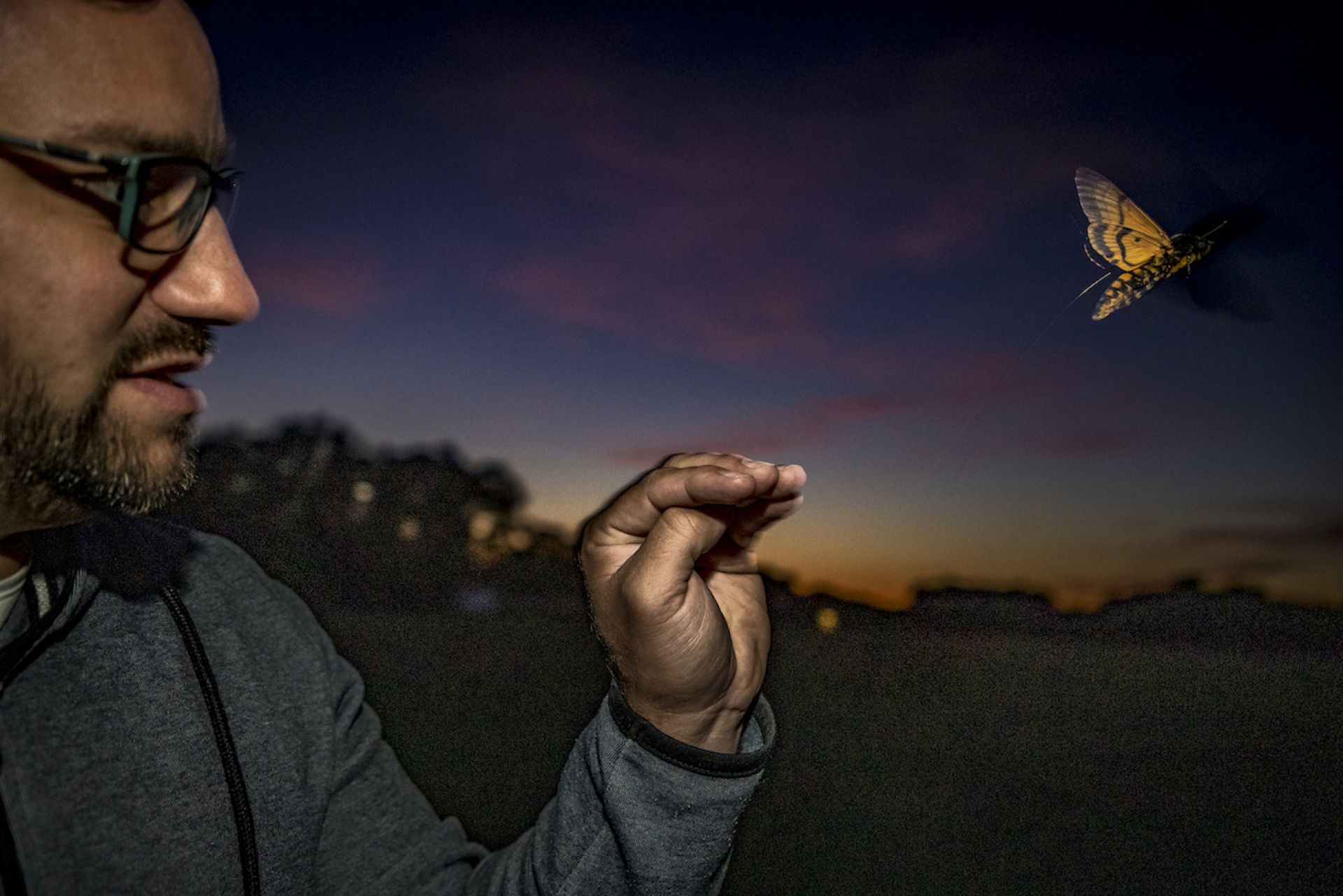Media Releases
‘Spooky’ moths stay on target

A unique species of moth made famous by a classic horror film has helped to unlock a century-old mystery of what insects do over their long-range journeys.
In a world first, the Death's-head hawkmoth, which came to prominence in the 1991 movie The Silence of the Lambs, has been found to maintain a perfectly straight flight path even in rough wind conditions in a study led by recently appointed JCU Zoology Lecturer Dr Myles Menz.
Dr Menz conducted the study with his research team while previously working for the Max Planck Institute of Animal Behaviour (MPI-AB) in Germany, radio tracking migrating hawkmoths for up to 80 kilometres - the longest distance that any insect has been continuously monitored in the wild.
The study, which also involved the University of Konstanz in Germany and the University of Exeter in Britain, confirms that hawkmoths can accurately maintain straight trajectories over long distances, employing sophisticated strategies to counter and correct for unfavourable wind conditions.
The findings reveal that insects are capable of accurate navigation on their long journeys.
“Studying insects on the move is a formidable challenge,” said Dr Menz.
“They’re usually too numerous to mark and find again, and too small to carry tracking devices.
“Understanding what insects do during migration, and how they respond to weather, is a last frontier in migration science.”
When winds were favourable, researchers found the hawkmoths flew high and slow, allowing the air to carry them.
But during harsh headwinds or crosswinds, they flew low to the ground and increased speed to keep control of their path.
“For years it was assumed that insect migration was mostly about getting blown around. But we show that insects are capable of being great navigators, on par with birds, and are far less vulnerable to wind conditions than we thought,” Dr Menz said.
“By showing that it is technically possible to continuously monitor individual insects over migration, and to observe their flight behaviour in detail, we hope to inspire more studies to answer many more big questions in this area.”
The research team first reared caterpillars until adulthood in a laboratory. When moths emerged as adults, they were fixed with radio tags weighing 0.2 grams—less than 15 per cent of an adult moth’s body weight.
“The moths would probably eat more weight than that in a night, so these tags are extremely light for the insects,” Dr Menz said.
The researchers were then able to track the radio-tagged hawkmoths in a light aircraft, becoming the first study of its type to continuously study nocturnal migrating insects in the wild, and the longest distance over which any insect has been continuously tracked in the field.
The team followed 14 moths each for up to 80 kilometres or four hours in a stretch long enough to be considered migratory flight, using antennas mounted on a Cessna aircraft to detect precise locations every five to 15 minutes.
Insects were followed in a south-south-west direction from Konstanz in Germany into the Alps, which follows the route taken by hawkmoths towards the Mediterranean and Northwest Africa.
“When you’re in an airplane, it becomes extremely difficult to wait for the insects to begin migrating again because you would have to be in the air when this happens, which could be anytime in the night,” said study senior author and movement ecologist for MPI-AB and the University of Konstanz, Martin Wikelski.
Dr Menz said the research team now wanted to find out how moths are able to maintain such straight lines.
“Based on past lab work, it’s possible that the insects are using internal compasses, both visual and magnetic, to chart their way around the world,” he said.
Media enquiries: michael.serenc@news.com.au